Trainees Appointed in 2024 and reappointed in 2025
-

Adriana Sordida
Harnessing Protein Language Models to Identify Novel Sterol and Steroid-Binding Proteins: Advancing Physiology and Functional Insights
Steroids are essential lipids that play a critical role in maintaining cellular membrane integrity and regulating hormonal and metabolic processes, yet many of the proteins that bind to these molecules remain unidentified or uncharacterized. My research leverages recent advances in machine learning, particularly Protein Language Models (PLMs), to predict and identify novel proteins that interact with sterols and steroids. A significant focus is on discovering bile acid-interacting proteins in both humans and gut microbes, as bile acids, which are co-metabolites produced by the host and modified by gut microbiota, are involved in crucial signaling pathways. Recent findings suggest that these novel bile acids may interact with unidentified proteins, and by applying PLM-based methods, I aim to uncover proteins that mediate these interactions, offering new insights into host-microbiome communication. By integrating PLM and machine learning tools, this research seeks to discover novel proteins that could have significant implications for both human physiology and our understanding of sterol-related functions across different organisms.
-
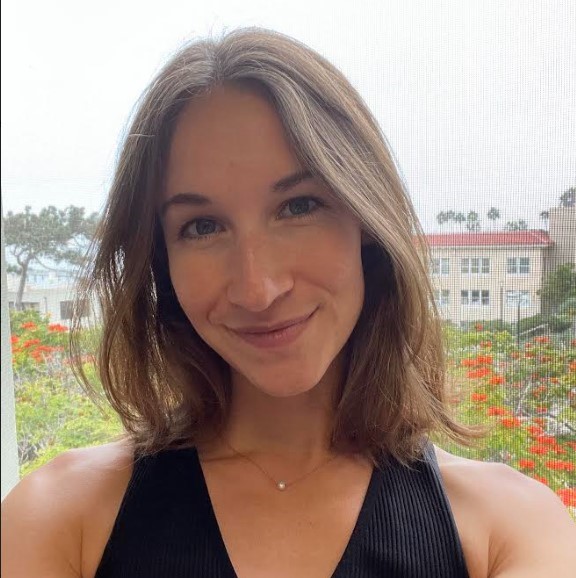
Anna Skrip
Uncovering the evolutionary history and medicinal potential of single-component flavin-dependent halogenases: an integrated approach
We aim to harness the power of selectivity and green chemistry with flavin-dependent halogenases. We utilize bioinformatics and enzyme characterization to understand nature’s evolved mechanistic preferences and inform novel biosynthetic approaches in drug development.
-

Brian Pham
Structural and functional characterization of RNA polymerase pausing and riboswitch co-transcriptional folding
My research focuses on how RNA polymerase pausing influences the co-transcriptional folding and function of riboswitches, regulatory elements in mRNAs that directly bind ligands to modulate gene expression. Specifically, I aim to uncover the mechanisms that link riboswitch folding kinetics to their regulatory activity.
-
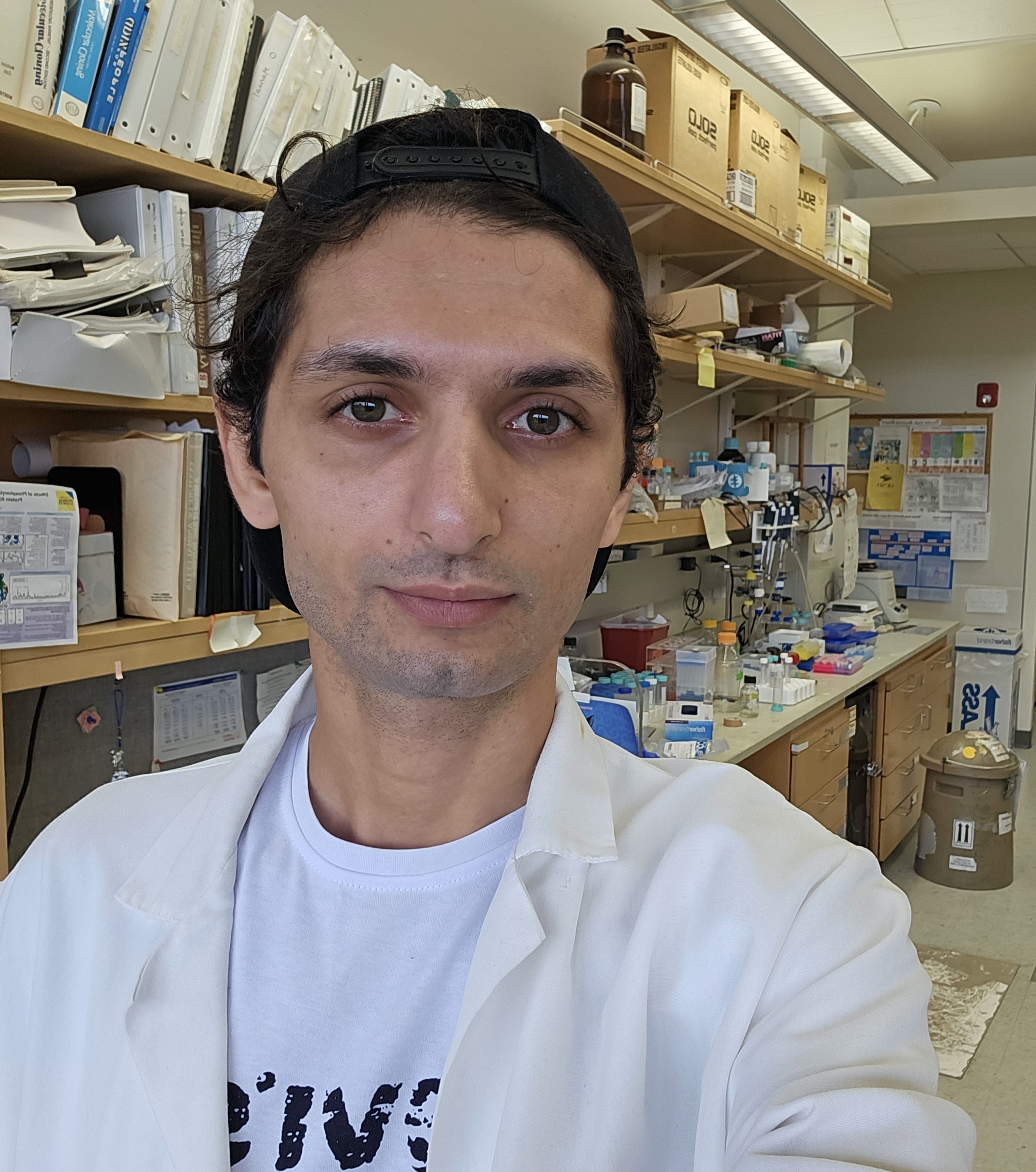
Caesar Tawfeeq
Conformational Dynamics of Wildtype and R201C Mutant G Stimulatory Protein Isoforms
At the Sunahara lab, we are using a hybrid approach of computational and experimental techniques to study wildtype and mutant heterotrimeric G stimulatory (Gs) proteins. Classical and Kinetically-accelerated MD simulations are utilized to understand the molecular mechanisms of nucleotide exchange and the conformational changes required to release GDP, a necessary step for activation. To test our hypothesis, more than 30 mutant constructs in key positions have been prepared to investigate experimentally using tryptophan fluorescence binding assays as a measure of nucleotide exchange. We are also studying the possibility that Gs protein stimulation can lead to the non-canonical activation of the ERK signaling pathway, opening up a new pathway for therapeutic targeting in cancer and disease.
-
Christine Vu
Elucidating ERCC6L2-Mediated Liquid-Liquid Phase Separation and Protein Interactions in DNA Repair Pathways
This study investigates the role of ERCC6L2 in DNA repair, focusing on its potential involvement in liquid-liquid phase separation (LLPS) to form biological condensates. We aim to elucidate the dynamics of ERCC6L2 LLPS and its protein-protein interactions using live cell imaging and TurboID methodology. Findings will provide insights into the molecular mechanisms of DNA repair, highlighting ERCC6L2’s function in damage recognition and pathway selection, with implications for therapeutic targeting in DNA repair-related conditions.
-

Daniel Mansour
Biophysical Modeling of Actin Networks Regulated by Liquid-like Protein Droplets
Several actin-binding proteins form liquid-liquid phase-separated condensates that promote actin filament assembly and bundling, which is crucial for local actin network organization. I am developing quantitative, predictive computational models that capture how actin filaments interact with these phase-separated condensates to form different actin networks. My research investigates how the interplay between physical properties and biochemical composition of condensates drives actin network organization and force generation.
-

Devlin Swanson
De novo design of multi-conformational proteins
Proteins derive their function through control of their energy landscape. While the ability to design proteins has improved dramatically in recent years, current methods struggle to design in the context of thermodynamics. I aim to improve on this by designing proteins that can adopt multiple conformations, and tune the energetics between multiple states. To achieve this, I will combine computational deep-learning techniques with experimental validation through cryo-electron microscopy (cryoEM).
-
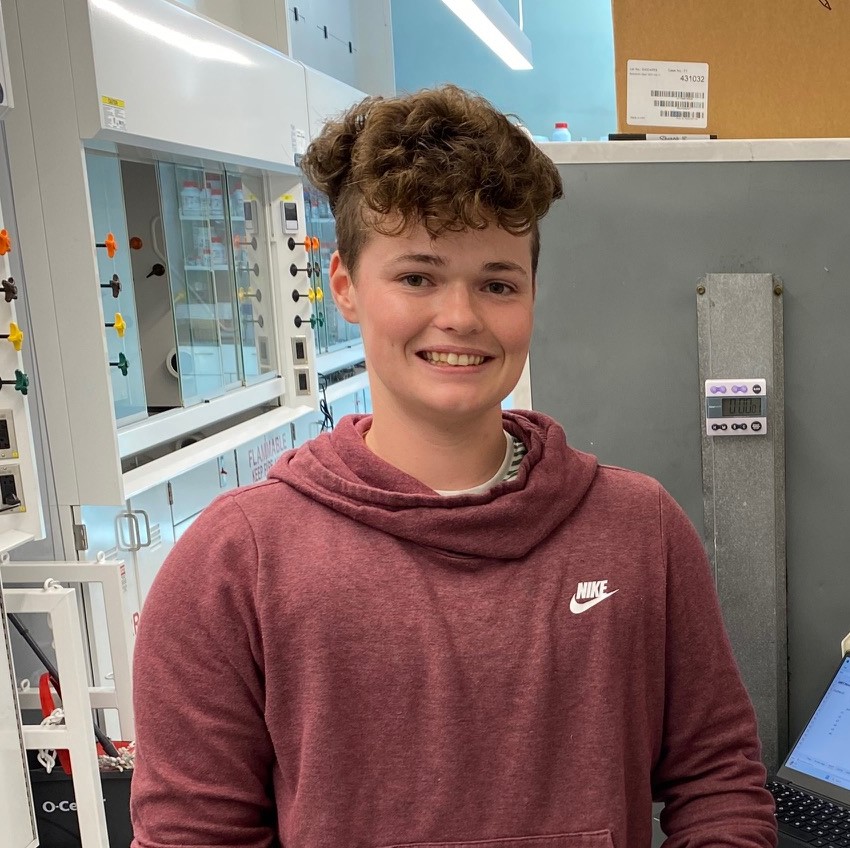
Emerson Hall
Investigating high mannose binding lectins for applications as potential antiviral molecules
I aim to characterize the glycotypes of three unique lectins Oscillatoria agardhii agglutinin (OAA), Cyanovirin-N (CVN), and Griffithsin (GRFT) using biophysical techniques. Biolayer interferometry (BLI), nuclear magnetic resonance (NMR), isothermal titration calorimetry (ITC) will be utilized to provide kinetic, structural, and thermodynamic information respectively. I hope to dissect the factors underlying lectin specificity and mechanism behind multivalency.
-
Jaqueline Lanzalotto
Mechanisms of RNA Localization in Aspergillus Nidulans
Protein synthesis is an essential component of cellular growth, survival and maintenance. Newly synthesized proteins can be transported by the intracellular trafficking machinery to where they are required in the cell. However, proteins can be locally translated rather than trafficked from their site of synthesis to their final destination. mRNA transport plays a pivotal role in enabling precise, on-site translation of transcripts. My research aims to understand the molecular mechanisms of mRNA localization in the filamentous fungus Aspergillus nidulans.
-

Kezia Jemison
Probing Receptor Binding Domain Structural Dynamics of the SARS-CoV-2 Spike Protein via Hydroxyl Radical Footprinting and Molecular Dynamics
My research aims to use Mass Spectrometry Hydroxyl Radical Protein Footprinting and All-Atom Molecular Dynamics simulations to investigate the structure and dynamics of the SARS-CoV-2 spike glycoprotein’s Receptor Binding Domain (RBD) of Wuhan-2019/Wild-type (WT), Delta (Δ), and Omicron (Ο) variants within respiratory- and respiratory aerosol- like environments to explain the observed increased infectivity and transmissibility of emerging COVID variants given the spike's direct involvement in triggering infection by binding the Human Angiotensin Converting Enzyme 2 (hACE2) receptor at the host cell surface after transmission via respiratory aerosol.
-

Luke Sebastian
De Novo Design of Protein Biosensors for Complex Biomolecular Structures
The development of biosensors to detect structural deformation or atypical biophysical morphologies has significant pharmacological implications. Recent advancements in de novo protein design have enabled the creation of novel biosensors with improved specificity. Leveraging native protein-ligand interactions simplifies biosensor development and increases the likelihood of successful outcomes. My research specifically investigates Transcription Activator-Like Effector (TALE) proteins and their interactions with B-form DNA. I aim to engineer TALE proteins that can accurately conform to distinct biophysical parameters of various DNA isoforms, including Z-DNA, which is associated with Alzheimer's disease, validating these designs through Transmission Electron Microscopy (TEM), Cryogenic Electron Microscopy (CryoEM), and in vivo studies.
-

Olivia Seidel
Uncovering the rules of lipid transport at membrane contact sites with new lipid flux sensors and single molecule tracking
Cells actively maintain the unique identity of organelles through targeted lipid trafficking and synthesis. Yet, the mechanisms by which it does these are largely unknown due to current limitations that come with imaging lipids, which include their relatively small size and their sensitivity to tagging-induced perturbations. To overcome these limitations, I am working on combining two imaging techniques developed by the Budin and Obara labs: Fluorogen-Activated Coincidence Sensing (FACES) and high-speed Single Molecule Tracking (SMT) to visualize lipids in a living cell in a spatially localized manner. I hypothesize that functional cell homeostasis and organelle membrane identity are generated by nanoscale, spatially regulated lipid trafficking and synthesis events. To target this hypothesis, I will be working to characterize the motion of individual lipid molecules in living cells, visualize lipid transfer events as they occur in their native membranes, and identify the rules that govern lipid transport at membrane contact sites. -

Sarah Johnson
Designing Multi-Targeting Protein Binders to Combat Antibiotic Resistance
Antimicrobial resistance is a global health threat and a growing barrier to the treatment of Mycobacterium tuberculosis (M.tb), the deadliest human pathogen. I seek to engineer a multi-targeting protein therapeutic to treat drug-resistant tuberculosis. By targeting various fitness and resistance mechanisms simultaneously, I intend to reduce the capacity of M.tb to survive and escape antibiotic effects. MmpLs are a family of transporters in M.tb that are critical for bacterial survival and virulence. I am employing machine learning-based methods to design de novo inhibitors of mmpLs, combined with high-throughput experimental assays to evaluate protein binding and microbial fitness.
Trainees Appointed in 2023 and reappointed in 2024
-
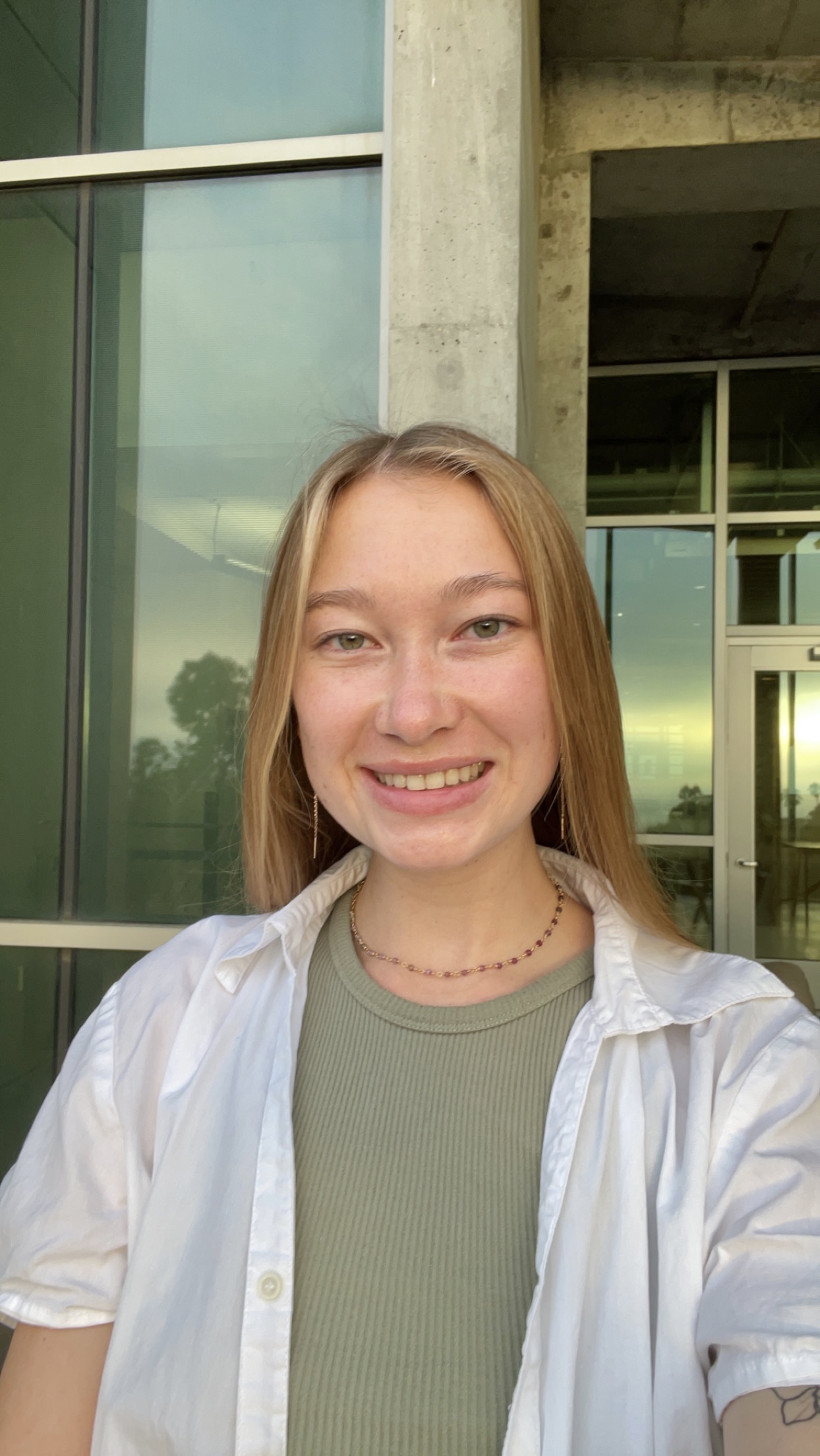
Kelly Isbell
Email: kisbell@ucsd.edu
Undergrad Institution: University of Virginia
Current Program at UC San Diego: Biochemistry and Molecular Biophysics
Advisor: Itay Budin
Mechanisms of PTCH1-Mediated Membrane Remodeling in Hedgehog SignalingThe hedgehog (Hh) pathway receptor Patched (Ptch1) suppresses the G-protein coupled receptor Smoothened (Smo). Ligands that inhibit Ptch1, such as sonic hedgehog in vertebrates, control tissue patterning during embryogenesis and tissue repair post-embryogenesis. Insufficient Hh signaling leads to developmental defects, whereas overactivation leads to ectodermal cancers including basal cell carcinoma (BCC) and medulloblastoma. Loss-of-function Ptch1 mutations are responsible for 85% of BCCs, a cancer for which more than 1 million US patients are treated for each year. Despite the narrow equilibrium necessary for proper Hedgehog signaling, exactly how Ptch1 regulates Smo is unknown. Ptch1 has been proposed to transport cholesterol across or out of the plasma membrane (PM), which goes hand-in-hand with findings that Smo is itself activated by cholesterol. The ability of cholesterol to act as a second messenger is surprising due to its high abundance in the PM and ability to rapidly flip-flop between bilayer leaflets. Sequestering interactions between sphingomyelin (SM) and cholesterol have been proposed to limit the accessibility of cholesterol to protein binding partners, but have not been rigorously tested. Using FRET and NMR-based assays, I aim to biophysically characterize the effects of SM sequestration on cholesterol chemical activity and interleaflet flip-flop kinetics. Then, utilizing Ptch1 proteoliposomes, I will elucidate the means and direction through which Ptch1 remodels membrane cholesterol as well as the conformational dynamics that dictate Ptch1 activity and inhibition. Finally, orchestrating a powerful combination of confocal microscopy, solvatochromatic dyes, engineered protein biosensors, and pharmacological and genetic manipulations, I will investigate the fundamental interactions between Ptch1, Smo, SM, and cholesterol that dictate Hh signaling in biophysically complex, living cell membranes. My ultimate goal is to generate a seamless model that describes how Ptch1-mediated remodeling of membrane cholesterol accessibility or activity on other lipid species regulates Smo activation.
-
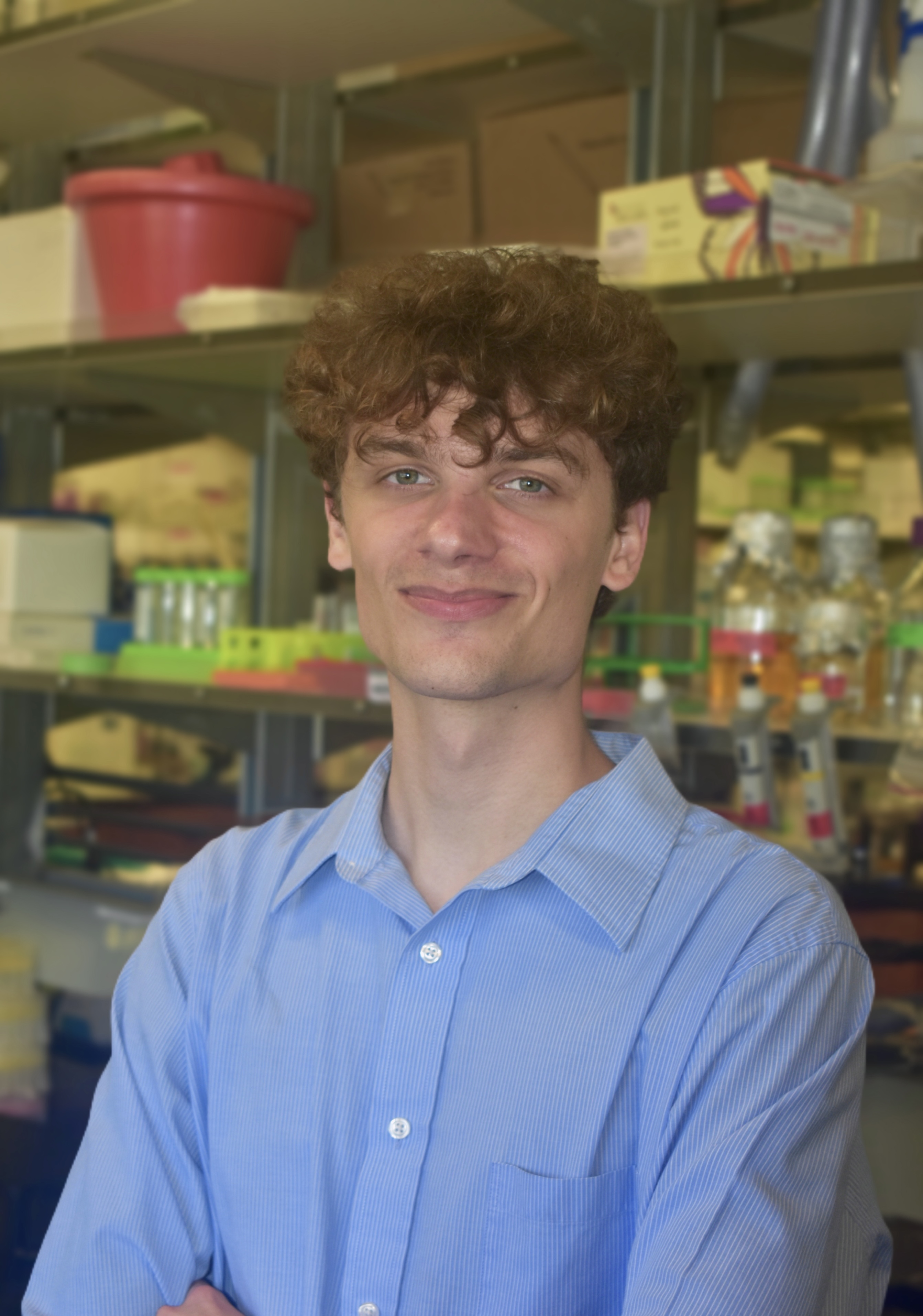
Benjamin Pollak
Email: brpollak@ucsd.eduUndergraduate institution: Boston UniversityCurrent program at UCSD: Biochemistry and Molecular BiophysicsAdvisor: Alexis KomorDevelopment of a mammalian cell directed evolution platform for base editors using TadATherapeutic genome editing can in theory cure genetic diseases by correcting underlying mutations at the genetic level. However, traditional genome editing methods that use Cas9-induced double-strand breaks (DSBs) suffer from low efficiencies and precision and are therefore not therapeutically viable for the correction of single nucleotide polymorphisms. Addressing this need, my advisor Alexis Komor pioneered DNA base editing, an innovative technology that enables accurate, precise, and programmable modifications of individual DNA bases that avoids the use of DSBs. I intend to develop and optimize a mammalian cell directed evolution platform for base editing, generate a large dataset of functional mutations in a successful DNA base editing enzyme (TadA), use in silico modeling to functionally characterize their roles in structure and DNA editing catalysis, and apply this system to other plausible DNA editing proteins to unlock additional classes of base editors. -
Alex Plonski
Email: aplonski@ucsd.edu
Undergrad Institution: University of Colorado, Denver
Current Program at UC San Diego: Biochemistry and Molecular Biophysics
Advisor: Galia Debelouchina
Structural and Mechanistic Investigations of Calcification in Age-Related Macular DegenerationAge-related macular degeneration (AMD) is a progressive eye disease that is most prevalent within aging populations and can lead to significant vision loss. AMD affects the macula on the central retina, where pathological extracellular deposits called drusen can be found between the sub-retinal pigment epithelium and Bruch’s membrane. These deposits consist of a core made up of extracellular lipids enriched with cholesterol, which are encased by calcium-phosphate debris known as hydroxyapatite with proteins associated on the surface. The protein substrates include the blood protein Vitronectin, and Alzheimer’s Disease associated proteins Amyloid beta and Tau. Despite the significance of drusen and their association with both AMD and neurodegenerative diseases, the understanding of their molecular-level structure, mechanisms of assembly, and the role of the associated proteins remains limited. Gaining insights into these aspects will be crucial in understanding the role of drusen and calcification in AMD progression and may expose opportunities for diagnostic and therapeutic interventions that will have a significant impact on public health, especially in the aging populations disproportionately affected by AMD. Therefore, I am employing a range of biophysical techniques, such as fluorescence microscopy, aggregation assays, and solid-state nuclear magnetic resonance methods to investigate the structural, chemical, and physical properties of these calcified deposits. I am aiming to elucidate the mechanism of assembly of drusen, as well as structurally investigate the protein-mineral interactions within drusen.
-

Evan Wen
Email: evwen@ucsd.eduUndergrad institution: HKUSTCurrent program at UC San Diego: Biochemistry and Molecular BiophysicsAdvisor: Dr. Jin ZhangMechanisms of compartmentalized GPCR-mediated ERK signalingThe aim of my research is to elucidate the spatiotemporal activity network and molecular mechanisms of compartmentalized GPCR-mediated ERK signaling. -

Suzanne Enos
Molecular insights into Asp/Glu transport by the Mitochondrial Carrier Family
In humans, tight regulation of aspartate and glutamate concentrations in the mitochondria and cytosol is maintained by the aspartate/glutamate carriers (AGCs) of the inner mitochondrial membrane, also known as SLC25A12 (AGC1/aralar) and SLC25A13 (AGC2/citrin) – regulation that is critical for the citric acid cycle, gluconeogenesis, myelin synthesis in neurons, and neurotransmission. Through structural characterization by cryogenic electron microscopy (cryoEM) and complementary biochemical study, I aim to elucidate the transport mechanism, substrate specificity, and regulation of AGC1 and AGC2.
-
Lydia Chambers
Email: lychambers@ucsd.edu
Undergrad Institution: Gonzaga University
Current Program at UC San Diego: Biochemistry and Biophysics
Advisor: Kevin Corbett and Elizabeth KomivesBacterial antiviral defense pathways encode eukaryotic-like ubiquitination systems
"Ubiquitin (Ub) is a highly conserved protein involved in the regulation of a cell. It is attached to a target proteins through the process of ubiquitination, which typically leads to the target’s degradation. Ubiquitination requires the coordinated function of an enzymatic cascade utilizing a Ub-activating enzyme (E1), a Ub-conjugating enzyme (E2), and a Ub-protein ligase (E3). In some systems, Ub will be substituted for a Ubiquitin-like protein (Ubl) which operates as Ub in the cascade but has a unique biological function. I am studying the recently identified BilABCD ubiquitination systems, which are present in bacteria and contain four proteins: a Ubl, CEHH (an E2 protein), a canonical E1 protein, and a deubiquitinase (DUB) which has been identified as a JAB/JAMM family peptidase. These bacterial defense systems protect the host from bacterial viruses known as bacteriophages (phage). The goal of my research is to characterize these systems by determining their target, the structures of all four proteins, and their biological role. I have determined two structures of the type II BilABCD E1-E2-Ubl complex. The first structure shows the E1 CYS domain in a downward conformation, positioning the E1 catalytic cysteine in the E1 adenylation site (Fig 1a). The second conformation shows the CYS domain flipped upward, now mimicking the transfer of Ubl from E1 to the catalytic cysteine on E2 (Fig 1b). When these structures are compared to canonical E1-E2-Ub/Ubl complexes, significant structural homology between the bacterial and eukaryotic systems is demonstrated (Fig 1c). I have also confirmed that the BilABCD systems are fully active Ubl conjugation systems and mutation of the E1 (C417) and E2 (C138) catalytic cysteines and an arginine in the E1 active site (R246) eliminates activity. This is the first fully functional ubiquitination pathway identified in bacteria. These results suggest that these systems are evolutionary ancestors of canonical eukaryotic ubiquitination machinery. A conjugation target has been identified in type I BilABCD systems. Current and future work will focus on determining the Ubl modification site of this target and the mechanism of BilABCD target recognition."